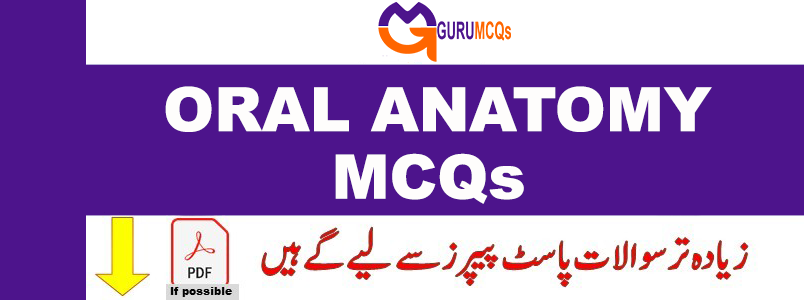
Gurumcqs.com offers a comprehensive collection of 2000+ basic and advanced oral anatomy MCQs, complete with answers and detailed explanations. This section is dedicated to covering all essential aspects of the oral anatomy subject, focusing on key topics related to the anatomy of the mouth and teeth. These include Basic Oral Anatomy, Calcification and Eruption of Teeth, Deciduous Dentition, Occlusion, Permanent Dentition, Physiologic Form of Tooth and Periodontium, Osseous Structures, TMJ, and more. The questions are carefully selected from reputable reference books on oral anatomy. These dental anatomy MCQs are valuable for interview preparation, entrance examinations, competitive exams, and certifications, catering to individuals with varying levels of experience, whether they are seasoned professionals, freshers, or students. Additionally, you can explore MCQs on medical topics on the platform.
201. Which of the portions of the intra articular disc is the thinnest ?
A. Anterior
B. Intermediate
C. Posterior
D. retrodiscal
202. Temporo – mandibular ligament is attached to _____________?
A. Lateral aspect of TMJ
B. Posterior aspect of TMJ
C. Mandibular condyle
D. Coronioid process
203. Which is the predominant factor in the formation of the alveolar process_____________?
A. Eruption of teeth
B. Normal process of growth
C. Lengthening of the condyle
D. Overall growth of the bodies of the maxilla and the mandible
204. Lateral movement of condyle is caused by_____________?
A. Contralateral lateral pterygoid muscle
B. Both lateral and medial pterygoid muscle
C. Epsilateral lateal pterygoid muscle
D. Bilateral contraction of lateral pterygoid muscle
205. Depression of mandible is achieved by_______________?
A. Digastric
B. Lateral pterygoid
C. Geniohyoid
D. All of the above
206. On opening the mouth , if the jaw deviates to the right side, it indicates the paralysis of__________?
A. Right lateral pterygoid
B. Left lateral pterygoid
C. Right medial pterygoid
D. Left medial pterygoid
207. Which of the following is not a structural element of the temporomandibular joint ?
A. Sigmoid notch
B. Articular disc
C. Capsular ligament
D. Joint cavities
208. The zygomatic bone does not articulate with________________?
A. Frontal bone
B. Maxillary bone
C. Nasal bone
D. Temporal bone
209. Articular disc of TMJ is__________?
A. Thickest posteriorly
B. Narrow in the centre
C. Strengthened by lateral pterygoid
D. All of the above
210. Which of the following movement (s) is / are involved in the opening of the mouth?
A. Only hinge ( rotation )
B. Only translation
C. Hinge followed by translation
D. Translation followed by hinge

Pingback: Oral Pathology MCQs with Answers for Exam Preparation - GURU MCQS